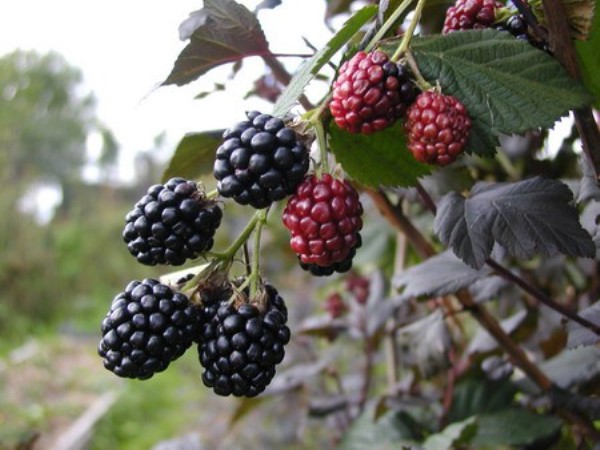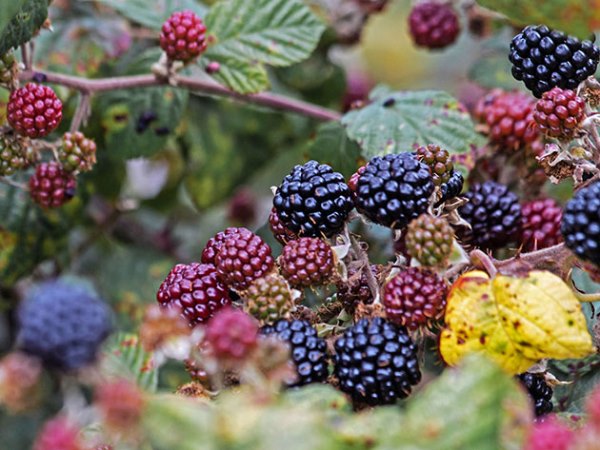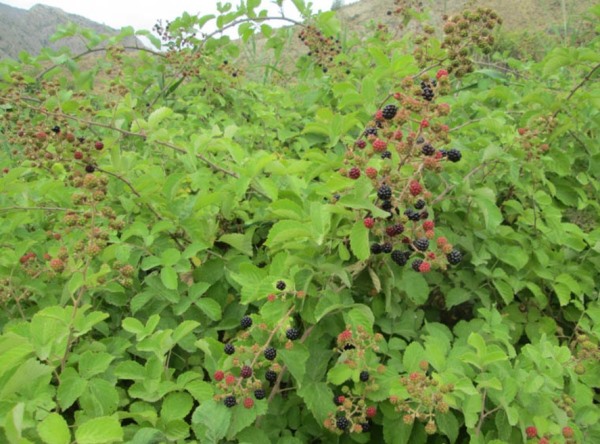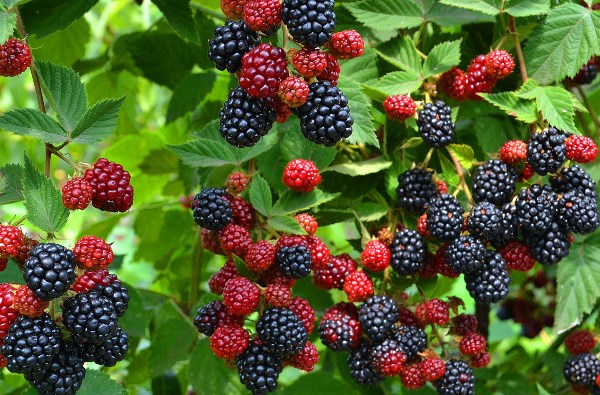What year does blackberry begin to bear fruit and when to harvest
Content
When blackberries begin to bear fruit
Blackberries have been known in our country for a long time, but summer residents began to massively grow them on their plots a couple of decades ago. Moreover, in our country it is distributed mainly to private farms, it is very rarely grown on small farms. In Europe (especially in Poland and the UK), farmers boldly set about growing vitamin berries for commercial purposes, but they cannot keep up with the world leaders in production - Mexico, Canada and the United States. By the way, it is from Mexico that this delicate berry comes to Europe.
Blackberries belong to biennial crops - in the first year of life, its shoots grow, and the fruit buds are just being laid, in the second year of life, flowers appear, then fruits. After that, the sprouted shoots die off, which is why they are cut out at the root in the fall. In parallel with fruiting shoots, replacement shoots grow, on which fruit buds are laid. Of these new shoots, the bush is rationed, removing the extra ones, leaving the strongest ones that will yield the next year's harvest. Thus, the owner can plan the development of the bush and the harvest.
But there is also the remontant blackberry, which is cultivated as an annual crop. It forms fruits on the shoots of the first year, after which all shoots are cut in the fall, and the next year new ones grow, on which flowers will grow, and then fruits. You can not cut off the shoots after fruiting, then next year there is a reason to wait for two harvests.
Berry crops are usually planted in the spring in an open, well-lit place with prepared (generously fertilized) soil. After planting, the seedling is cut, leaving shoots no more than 30 cm from the ground. Then they take care of it all season - they water it, weed it, loosen the ground around it, save it from pests, and in the fall they fold the shoots carefully and put them under cover, in winter they also throw more snow on them. The next year, these shoots will give the first fruits, which are usually allowed to ripen - they will no longer weaken the bush. After a couple of years, the root system will develop, the bush will mature, fruiting will reach its maximum.
When blackberries are harvested
The wild progenitor of our garden blackberry usually ripens in the second half of summer. But today scientists tell the crop when it is better to ripen. The varieties and hybrids created by breeders can be independently selected according to the time of fruit ripening. Just like a thorny shrub, which gives a lot of unpleasant moments for a gardener when caring for it, it can be replaced with a thornless one, because a garden thornless blackberry has already been created.
There are early, mid and late blackberry varieties.
Early varieties ripen in June. There is an opinion that these are not the most delicious, usually sour and small berries, but this is not entirely true. For example, from the beginning of June, large cone-shaped berries of the Columbia Star variety can be picked.Its thornless creeping shoots are grown on trellises. This variety is distinguished by its undemanding growing conditions and care, it gives a rich harvest of aromatic berries, sweet with sourness. The very famous Natchez variety gives its first ripe berries in June, and the last in August. This thornless bush forms strong, upright shoots, and its large berries are sweet.
"Thornfree", "Karaka Black", "Loch Tay" - all these are early varieties that are resistant to traditional diseases of the culture. The only thing that can be feared when growing early blackberries is spring frosts, if they fall at the beginning of flowering, the harvest will be spoiled.
Most varieties of blackberries have extended fruiting: flowers bloom in parallel, ovaries are formed, berries ripen. All this can last from 4 to 6 weeks, some even longer. Harvesting should be done in 2-3 days; it is undesirable to leave the berries on the branches after they are fully ripe.
This feature is seen as a virtue if you want to constantly get fresh berries or as a disadvantage if you want to harvest the crop as soon as possible in order to process it.
July is the ripening time for mid-season blackberry varieties. Among them there are thorny and thornless, large-fruited and not very. Large-fruited "Black Satin" and "Loch Ness" enjoy well-deserved popularity. "Lawton" is an old variety, its berries are not very large, but fragrant, with a sweet-sour dessert taste, they tolerate transportation well and remain for several days without losing their qualities. "Loughton" usually gives an excellent harvest, blooms even when there is no threat of late frosts, and ripens under the bright warm sun.
The harvest of late blackberries ripens in July - August, sometimes it captures September, like "Chokeberry". The most famous varieties are: "Chester Thornless", "Navajo", "Texas", "Apache". It is good to get a harvest of delicious vitamin berries at the end of summer, when all the others have long been ripe, eaten and forgotten. But with late ripening, there is always a danger of losing part of the crop with the arrival of cold weather. The fact is that even those blackberries, which the creators declared frost-hardy, will freeze out in our winters without shelter. This means that in the fall, before the arrival of cold weather, you need to have time to cut and cover the shoots for the winter, even if not all the berries are ripe.
There is also a remontant blackberry, which is capable of producing a crop not only on the shoots of the first year, but can give two crops: one on the shoots of the second year (if they are not cut off), and the other on new shoots. Then the first harvest will be at the beginning of summer, like raspberries, and the second is able to leave in autumn (it may become a problem for him to have time to ripen before frost). There are hybrids of raspberries and blackberries (varieties of the so-called ezhemalina), which are so not afraid of cold weather that they can ripen almost in frost. Repaired varieties are not like that. In greenhouse conditions, they give two excellent harvests: in May - June and in September. But in the open field, not all climatic conditions can allow it.
There are so many varieties and hybrids of blackberries that every gardener can choose them not only for the size and taste of the berries, but even for the timing of fruiting.
Video "How to get a record harvest of blackberries"
From this video you will learn what kind of blackberries you need to plant on the site and how to care for them in order to get record harvests of berries from June to September.





